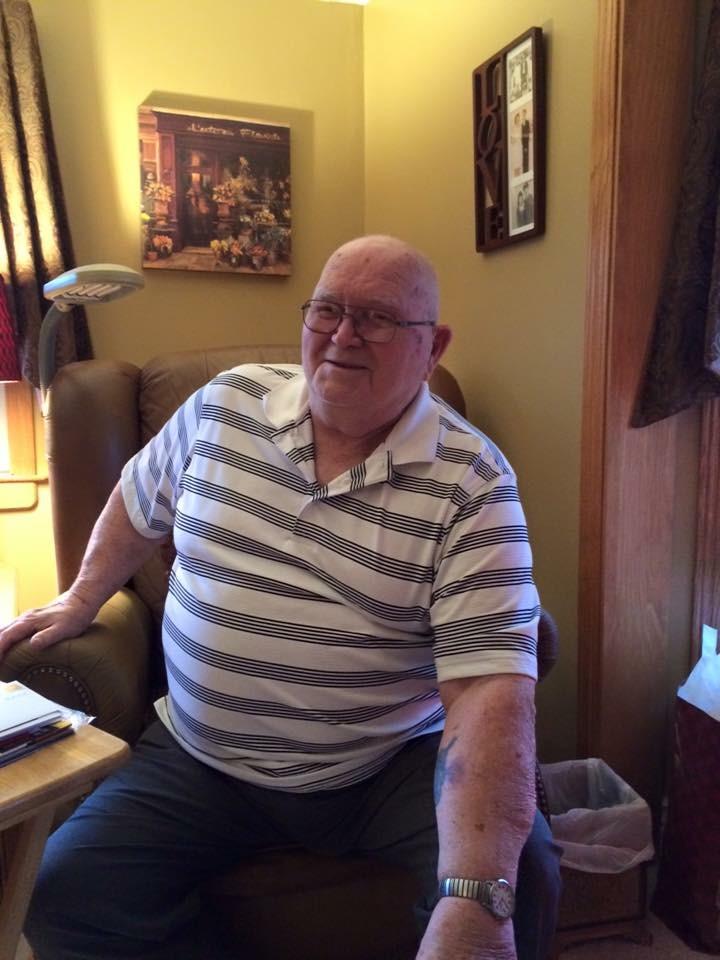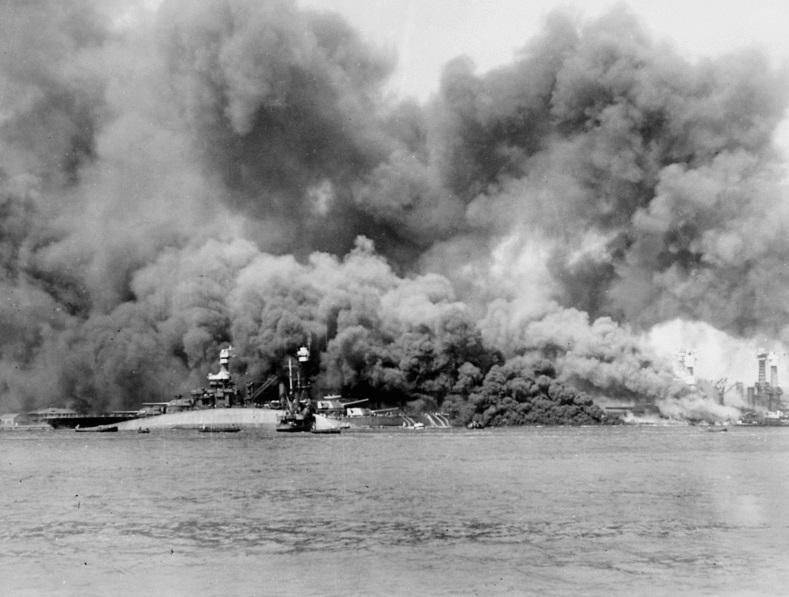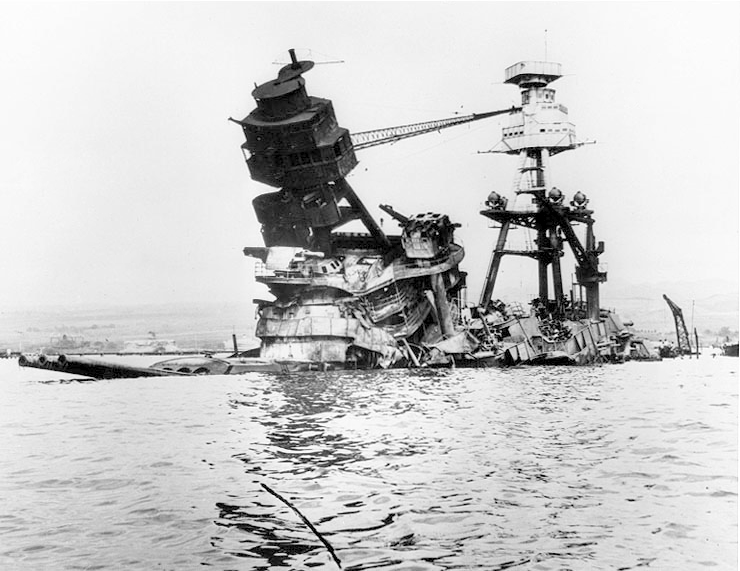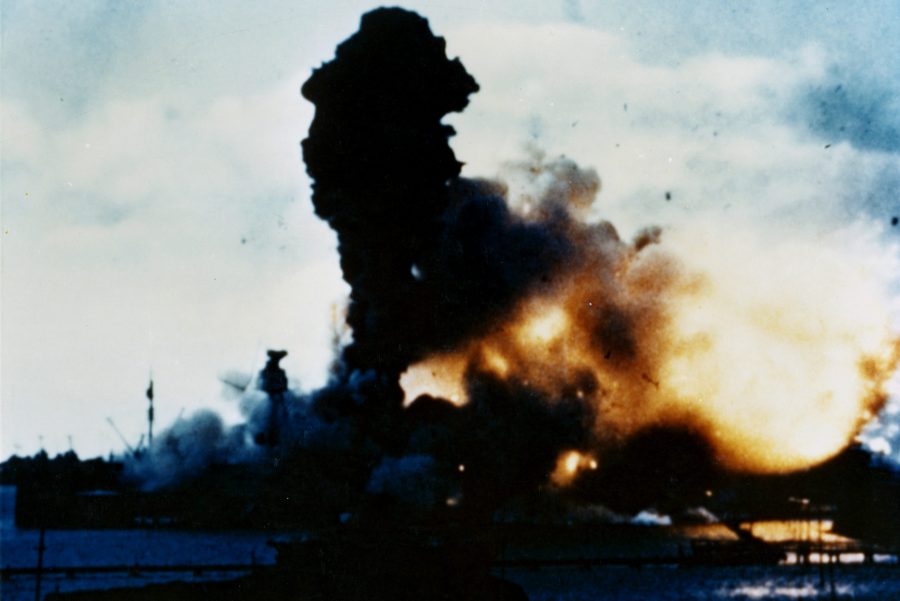IMAGE / U.S. Navy / Wikimedia Commons
The forward magazines of the battleship USS Arizona explode during the Japanese attack on Pearl Harbor, Dec. 7, 1941.
75 years after the attack on Pearl Harbor, local survivor Asa Fortier remembers
December 7, 2016

Mr. Asa Fortier, 92-year-old Davison resident, survived the attack on Pearl Harbor.
December 7th marks 75 years since the Japanese launched a sneak attack on Pearl Harbor in 1941, leaving 2,403 Americans dead and forcing the United States to enter the second world war.
As years passed since the attack, most of the 60,000 survivors of Battleship Row and Hickam Airfield have died. Last year, it was estimated only 2,000 to 2,500 survivors were still alive.
Mr. Asa Fortier, 92, is one of the few remaining servicemen who bore witness to that “date which will live in infamy,” as President Franklin D. Roosevelt said in his speech to Congress on Dec. 8, 1941.
Fortier was born in 1924 near Albuquerque, N.M. His life was greatly impacted by the Great Depression, and he was forced to take numerous odd jobs so that his family would have some form of income.
“I worked on my uncle’s farm before I went into the Army,” Fortier said at his Davison home. “I went into the three C’s (Civilian Conservation Corps) also. I worked there for a while, drove trucks.”
Fortier decided to join the Army in September 1941 after being persuaded to join by his brother.
“My brother was in the Army at Fort Bliss, and he happened to be on maneuvers in Louisiana at the time,” Fortier said. “So I was 17. I hitchhiked to Fort Bliss and joined up with the Army.”
Fortier went into the Medical Corps, becoming a medic. He was sent to Fort McDowell in Arizona for three weeks before he was shipped out to Hawaii.

Battleship Row is ablaze after the Japanese attack on Pearl Harbor, Dec. 7, 1941. The capsized USS Oklahoma is visible in the foreground. Behind it is the USS Maryland. The USS West Virginia burns furiously on the right.
“I figured I wanted to see Hawaii, never seen it before,” Fortier said. “We shipped out on one of the big troop ships that were going over then, and we got in Oahu, Honolulu, and we took the the narrow gauge railroad going from Honolulu to Schofield Barracks, and so that was my first time (in Hawaii).”
Fortier worked in medical wards, helping out the sick, and was stationed around Tripler Army Medical Center, outside of Honolulu.
Fortier noted how once he and his unit reached Honolulu, they didn’t receive much training.
“I didn’t get trained much. I was sort of waiting to transfer out,” he said.
On Dec. 7, 1941, Fortier found himself in his barracks when Japanese planes attacked Pearl Harbor.
“I was going to bed (in the barracks), and the Japs came over,” Fortier said. “Of course we had quite a time with that.”
The attack started at 7:48 a.m. Hawaiian Time when 183 Japanese airplanes attacked in the first wave, shooting down any American airplanes already in the air and strafing and bombing Hickam Airfield.
Japanese aircraft made torpedo and bombing runs on American ships anchored inside the harbor. The second wave consisted of 171 Japanese airplanes.
Battleship Row, a grouping of eight American battleships inside the harbor, was hit hard.

The burned-out wreck of the USS Arizona as it sits on the bottom of Pearl Harbor in December 1941.
Out of the eight battleships, four were sunk in the attack.
The USS Arizona and USS Oklahoma were considered total losses.
The Arizona was hit by an armor-piercing bomb, resulting in the ship blowing up and causing the deaths of 1,177 sailors. The Arizona’s death toll accounted for over half of the total servicemen to die at Pearl Harbor.
The remains of the Arizona still rest at Pearl Harbor.
The Oklahoma took three torpedo hits and capsized. Over 429 sailors on the Oklahoma were killed in the attack.
Altogether, 19 American ships were damaged or sunk on Dec. 7, while 188 American airplanes were destroyed in the attacks.
Fortier remembered being given the grisly job of working in one of the many makeshift morgues. With 2,403 Americans killed, including 68 civilians, Fortier’s job was burdensome.
“I was identifying the dead in the morgue, inspecting the dead for identification,” he said. “We were up about three days, I think, doing that.”
Fortier also recalled how all of the schools in Honolulu were evacuated so that the military could use them as makeshift hospitals and morgues.
The Navy got hit hard, along with the pilots at Hickam Airfield. The pilots and sailors were being brought in wounded or dead. That went on for about a week.
— Mr. Asa Fortier, Pearl Harbor survivor
“They (the military) were on the lookout for an all-out attack by the Japanese,” Fortier said. “We evacuated the schools, took the desks out and put beds in all of them, even private schools. We had a three-tier hospital. It was full of wounded.
“The Navy got hit hard, along with the pilots at Hickam Airfield. The pilots and sailors were being brought in wounded or dead. That went on for about a week.”
Eventually, Fortier’s job as a medic took him to Christmas Island in the Indian Ocean and later he returned to Hawaii. While there, he was transferred to an ambulance unit.
He participated in the 1944 invasion of Guam as an ambulance driver, helping the wounded.
